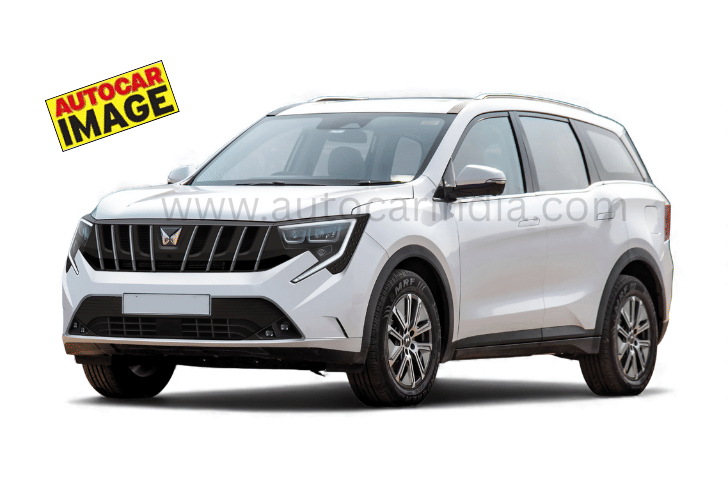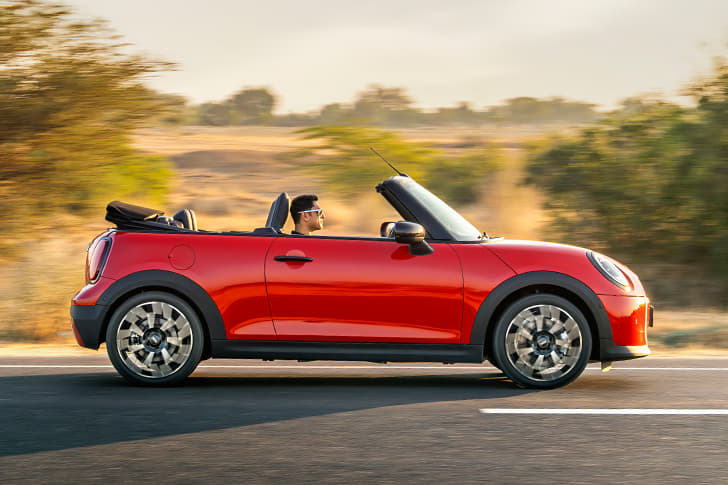The Etios was conceived from a clean sheet of paper but it appears that Toyota has used the Yaris, which has similar dimensions, as a starting point. The end result, however, is a car that looks like it has been built by a committee rather than gut feel or any emotion.
Not many would call the Etios ugly but even fewer would call it pretty and if there is one area where the Etios is at a disadvantage, it’s with the styling. The meek-looking headlights, simple body lines and a bulky boot won’t turn heads. However, Toyota has tried to add some visual drama. The only distinctive bits of the Etios are the boomerang-shaped grille, the bulge on the hood and a prominent crease that runs across the doors. Toyota has added a chrome strip at the rear to break the mass of the boot to (whisper it) make it less Logan-like. But the triangular tail-lamps and the large mass of the boot make this difficult to achieve.
The greatest achievement, however, is the Etios’s unreal kerb weight of 930kg which makes it, by far, the lightest mid-sizer and even lighter than several hatchbacks. And when you consider its generous dimensions, especially the 2550mm wheelbase, this achievement is even more astonishing.
How has Toyota managed to chop the flab? Cost and weight are inextricably linked and hence in the quest to remove expensive bits, the kilos have tumbled as well. Look closely and you can spot some obvious cost-saving measures. The door handles are grab-type, there’s no rear quarter-glass, the rubber beading for the door is missing as is the engine cover, there’s only one horn and there’s a single wiper too.
Other not so obvious areas where material (and hence cost and weight) has been saved is in the headliner, carpeting and NVH insulation. Open C-sections are used for the suspension arms (instead of tubular or boxed sections) and instead of using unnecessary heavy duty (and expensive) components which are designed to work at -30deg C (like in the Corolla and Camry), the same bits have been engineered to work down to only -5 or -10deg C.
The Etios is designed to meet tougher safety standards in the future which could come into effect during its eight-year lifecycle. However, for now, the Etios isn’t built with the same impact protection hardware that’s demanded in Europe and this again helps keeps weight down. Twin airbags and ABS are an option on the top-of-the-line model though.
In sharp contrast to the Etios’ bland exteriors is its unconventional dashboard. The instrument panel is not where you expect it to be, the central console with two vertically stacked centre vents is like nothing we’ve seen before (the lower one can be aimed at the rear seat). The flat-bottomed steering wheel (and the massive glovebox are unique as well. The odd placement of the various bits does take some getting used to, but once you get accustomed to the new layout, the change is actually quite welcome. Surprisingly, for all the chop and change, the functionality of the cabin is brilliant. The chunky steering with its dimple finish (only available on the VXi model) feels terrific and the white semi-circular speedo and tachometer are quite distinctive, especially when lit up at night.
However, there are plenty of low-rent bits as well. The dashboard plastics don’t have a quality feel, the air-con controls look like they have been lifted from an old Maruti and the cable-type headlamp height adjuster looks even worse. Then, the carpets are very basic and the sun visors look cheap too. Why Toyota has painted many bits in Bangkok-red lipstick is anybody’s guess. It looks too loud and out of place and is at odds with the conservative nature of this car.
The Etios’ trump card is space. The front and rear seats are both big and wide, offering excellent back and thigh support. There is plenty of leg- and headroom around as well. The Etios is almost as wide as a Camry, so sitting three abreast at the rear is quite comfy. And making life easy for the middle passenger is the flat floor and well designed backrest. However, what these seats lack is good lateral support and passengers do slide around a bit on the flat surfaces if you corner the Etios vigorously. There are no proper headrests in the rear and no central armrest but even so the large area the seats offer, the perfect backrest angle and the ‘hip’ point translate into a very comfortable sitting posture.
It’s not just passenger space that’s class-leading. Storage space is phenomenal too. Apart from the massive cooled glovebox, there are lots of useful cubbyholes, generous door pockets and seven bottle-holders! To top it off is a 595-litre boot which can easily swallow the luggage of five passengers on a long holiday. This is one area Toyota has not stinted on.
The Etios comes with a single engine option at the moment – a 1496cc petrol, developing 90bhp and 13.4kgm of power and torque. These are modest figures for a 1.5-litre engine that has deep-breathing 16 valves activated by twin camshafts. But don’t let that fool you into thinking that performance is less than adequate. This very long-stroke engine has phenomenal driveability which you immediately notice. Prod the throttle and the lightweight Etios simply leaps forward. The motor is super-responsive and has a solid, linear
tug from low engine speeds, which makes it ideal for city driving. In fact, so good is the pulling power that you feel the Etios could have got away with taller gearing. Where you think you need second gear, the Etios does the job in third.
All you have to do, even if you are in a high gear, is put your foot down and the Etios scoots forward to make up that gap in traffic. As a result, you don’t need to change gears frequently. But if you want to, the crisp and quick gearbox is quite nice to use. The light and slightly short throw allows you to execute a quick shift with just the flick of a wrist, and this reduces the stress on the driver even further.
Despite its long stroke, this engine revs quite freely but gets quite vocal when you near the redline. In fact, the engine is a bit noisy and not as well insulated from the passenger cabin as we would have liked.
The Etios is very capable on the highway and just loves to sprint. For a 90bhp car, it’s remarkably quick and can outrun several more powerful cars. Zero to 100kph is executed in a very quick 11.38 seconds and 140kph comes up in 23.5sec, which is very impressive and not far removed from something like a Honda City. Overtaking is quite easy and even with a full load, the Etios never feels labored.
Of course, the secret to the strong performance is the Etios’ light kerb weight and well spaced gear ratios. Our only complaint here is that you feel shortchanged by the very conservative rev limiter, quite suddenly encountered at 6000rpm. This motor feels like it can spin another couple of hundred rpm at least. Toyota, it seems, has curtailed revs in an effort to improve fuel efficiency and the longevity of the motor.
With an astonishingly low kerb weight, a very tractable engine that has been tweaked for fuel efficiency, we would have been surprised if the Etios was anything other than very fuel efficient. The ARAI or official Indian driving cycle test figure of 17.6kpl hinted at the Etios’ superb efficiency but it was our own test that confirmed this. We achieved a very impressive 11.8kpl in the city and 16.8kpl on the highway, which
makes the Etios the most fuel efficient 1.5-litre petrol car in the country.
For a car that doesn’t have sporting pretensions, the Etios is quite stiffly sprung but there’s a reason for that. High-speed stability was a priority for Toyota and hence a firm suspension set-up for better control was chosen. At low speeds, this has compromised the ride quality a bit which feels a bit jiggly over uneven surfaces but it’s not to the point of being jarring. Accentuating the stiff-kneed ride is a fair amount of road noise that filters through. Tyre noise and clunks from the suspension are quite audible, much of which is down to Toyota stinting on wheel arch and underbody insulation on this car.
Up the pace and the ride smoothens out and in fact is quite comfortable for most of the part. The Etios cruises with a flat and consistent poise which gives the driver a huge amount of confidence, especially at highway speeds. With a full load too, the suspension copes well and there’s none of that bobbing motion you encounter in a Dzire.
The Etios is pretty nimble for its size and easy to punt around town, thanks to a tight turning circle and super-light electric steering. However, enthusiasts looking for fun behind the wheel will be hugely disappointed with the steering which is totally devoid of feel. With plenty of turns lock to lock, it’s quite slow and there’s a dead zone around the straight-ahead position which makes you feel disconnected from the road. That’s quite a shame since the steering wheel itself is the sportiest bit of the car.













































